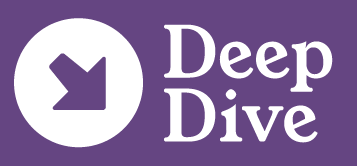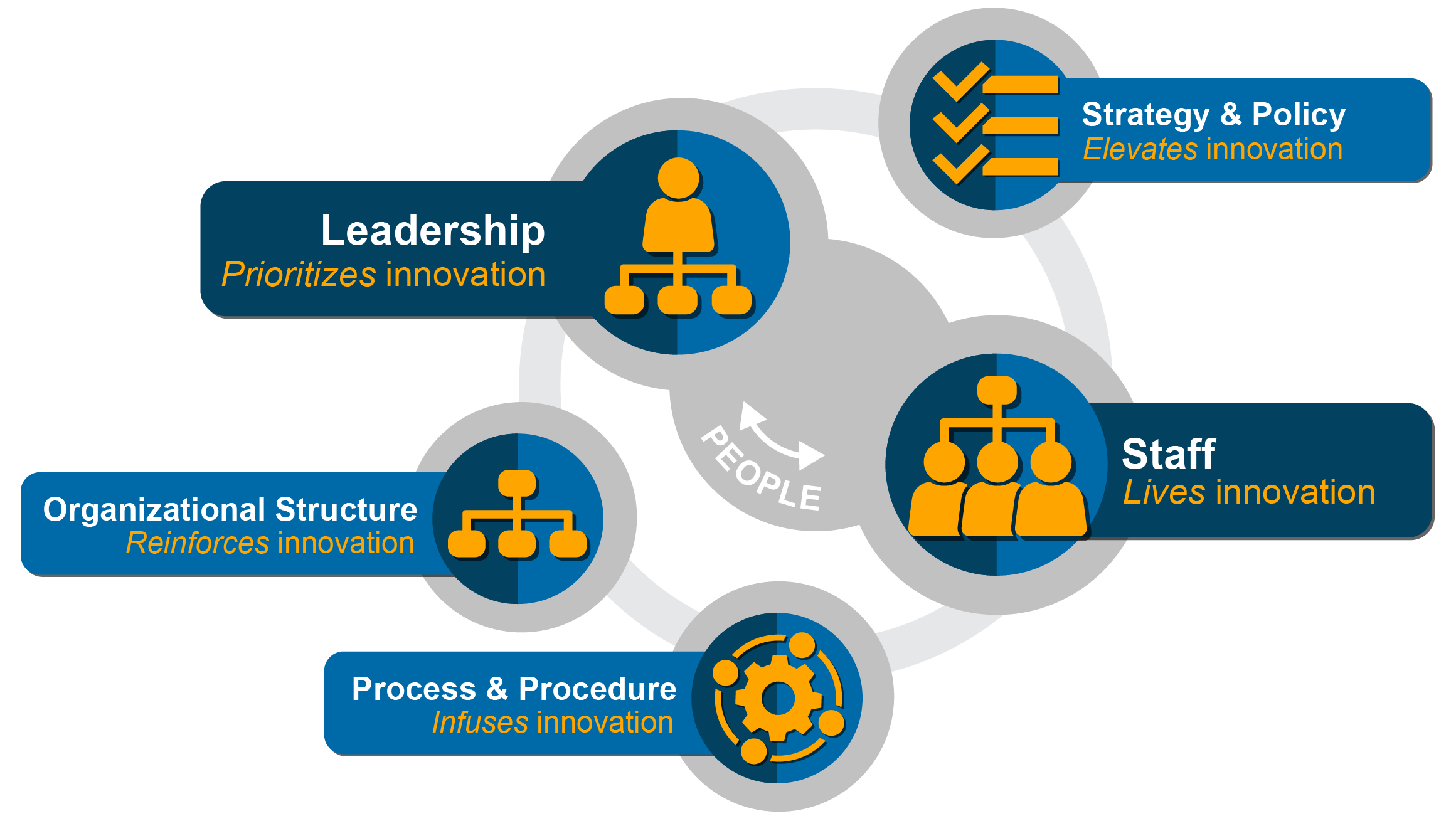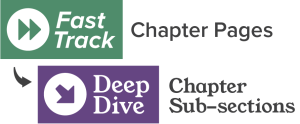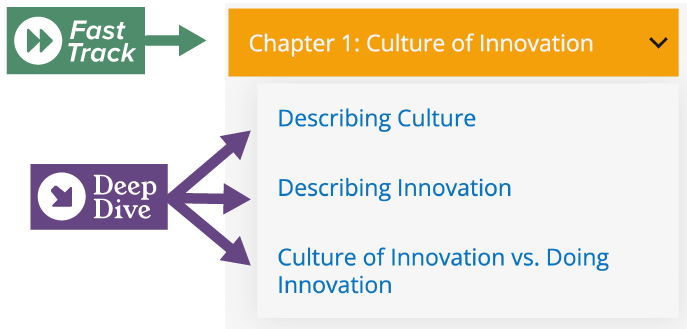

This is a Deep Dive page. Select the chapter for the Fast Track
Aligning Organizational Elements to Develop a Culture of Innovation
As mentioned on the previous page, people-in either leadership or staff positions-are the critical elements needed to drive cultural change. And when any of the five elements shift toward innovation, cultural change can start to take hold. Just like any culture shift, moving toward a culture that fosters innovation is not something that happens overnight; it must be developed over time. But it can be done by tapping into the five organizational elements. Figure D2.2 summarizes how these elements can be aligned to support innovation.

Figure D2.2: Organizational Elements Aligned to Develop a Culture of Innovation.
This figure presents a big-picture view of what the elements can look like; the specifics are up to you. How will you nurture each element? If you are a leader, how will you drive the emphasis on this culture change from the top down? Research demonstrates that cultural behavior is typically established by leaders and driven into the culture via strategic policies and daily processes. Have you crafted and re-crafted strategies and policies that prioritize the culture shift you are seeking? Does your organizational structure reinforce the collaboration needed to make impactful improvements? Do your policies and procedures get in the way of progress? Does all of this translate to your staff living out the values and behaviors of your culture and driving it up the organization?
When vendors began complaining about the time it took to receive payment for services rendered, one organization took a hard look at its tried-and-true accounts payable processes and procedures. The organization discovered that some of the old, manual ways of processing payments had been carried forward into the new accounting software system; this created duplicative work tasks and increased the turnaround time on payment to the vendors that were supporting daily activities. Staff mapped out the processes and were able to quickly remove wasteful, non-value-added work, and they immediately saw a reduction in the time it took to pay invoices. Customers (in this case, vendors) were ecstatic.
Table D2.1 provides a deeper look, demonstrating how each of the five organizational elements can affect the culture of innovation and influence the outcomes and behaviors of the organization.
Table D2.1: Organizational Elements Aligned to Support Innovation.
|
Organizational Element |
Description & Relevance |
Outcomes & Behaviors |
|
Leadership |
In other words, culture is an outcome of leadership through the development of ideas (process) not implementation of solutions (inventions). Leaders prioritize innovation, driving change by striving for new thinking instead of old norms. |
Staff/teams have a passion for their job, organization, and industry; feel supported and empowered to make decisions; and often inspire others. Staff/teams are encouraged to experiment because they can tie innovation to project budgets and can apply a fail-fast process. |
|
Staff |
Staff have the freedom and creativity to think independently while maintaining accountability and responsibility for their actions. |
Staff/teams embrace a learning and agile mentality and focus on experimenting and exploring. They reach out to others and seek tools and guidance to help them learn. They continually adapt to support ongoing organizational improvement. |
|
Strategy & policy |
This element sets up the organization's unifying purpose, vision, values and mission. Strategy is customer focused, supports innovation, and is focused on long-term solutions. HR policies enable leaders to hire diverse and innovative staff, as well as reward employees who innovate. |
Staff/teams live out the values that are written in the strategic plan, such as agility, diversity, inclusivity, and creativity. They are encouraged to innovate since they have performance reviews, incentives, and recognition programs as motivators. |
|
Organizational structure |
The structure embraces a team-based concept (whether within a hierarchical structure or not). Cross-functional collaboration is built in. |
Staff/teams like to collaborate and are accountable and responsible to one another. They participate in teams or groups to synergize innovation throughout the organization. |
|
Process & procedure infuses innovative culture. |
Policies promote embracing new things and focus on continuous improvement. Policies encourage collaboration, innovative training, incentives and rewards programs, the allocation of time for deep thinking, and the development of processes for creating a knowledge database and communication. |
Staff/teams use shared data to inform decisions; have structured time to innovate collaboratively, both internally and with external stakeholders; and are motivated to learn continually. |
Out of these five organizational elements, two focus on people (leaders and staff). These two areas can make the biggest impact when driving the culture of an organization. But this requires an understanding of people and their character. Therefore, a study of the people in your organization is a good place to start-and for more on that, be sure to keep reading this chapter.



